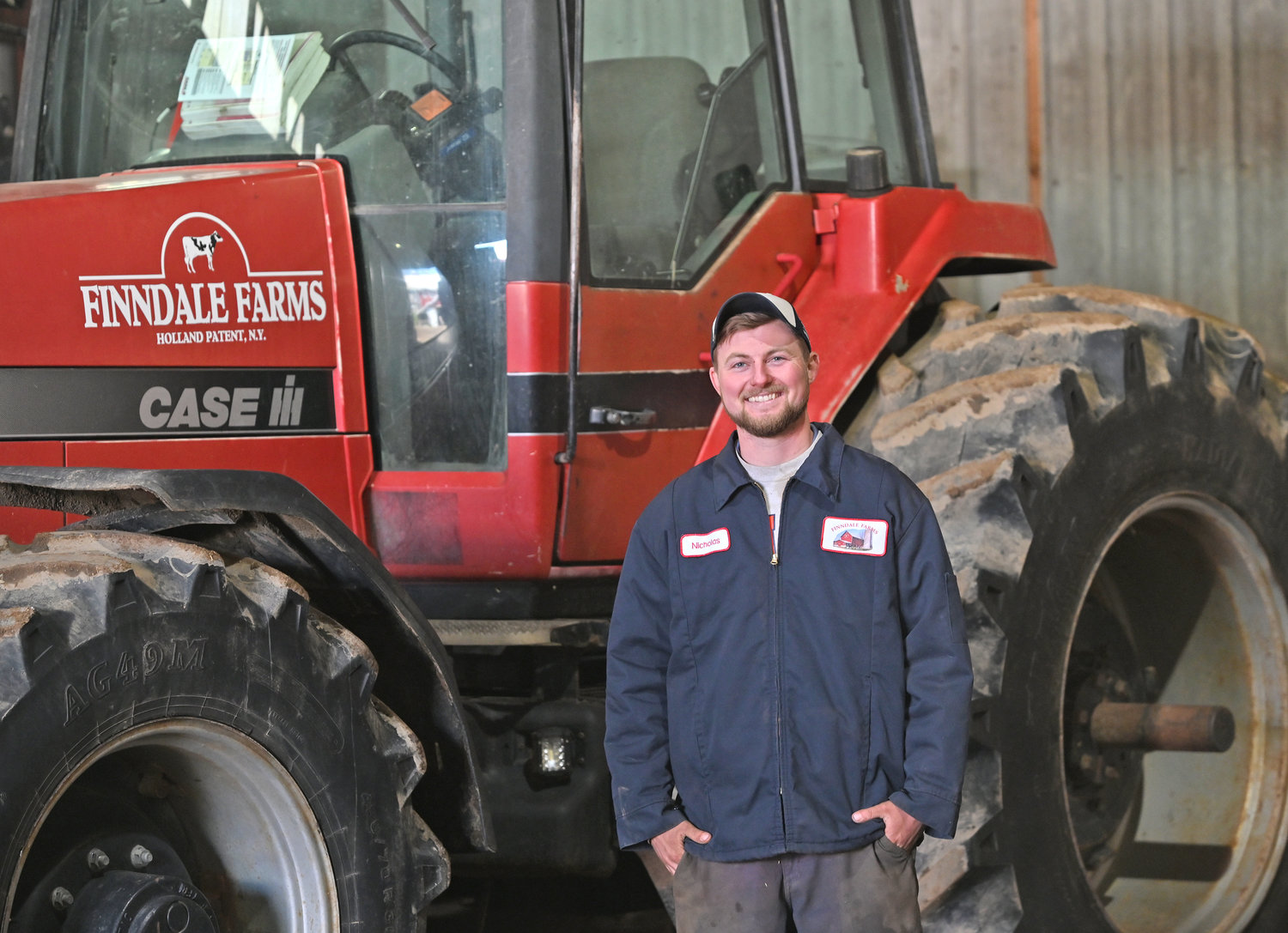 My name is Nicholas Finn, and I am a 25 year old, fourth generation American dairy farmer.
My name is Nicholas Finn, and I am a 25 year old, fourth generation American dairy farmer.
Dairy farming has been and will continue to be not only my profession, but my lifestyle. It is a lifestyle that continuously stimulates creativity, strategy, spontaneity, and resourcefulness into my everyday thinking.
For a long time in my youth, I was not sure that it was the profession for me, but with each passing day I become more confident in my decision to become a part of my family’s business.
I grew up very active in the culture of our dairy farm. From a young age, I learned to feed the animals, milk cows, take care of the chickens, and a long list of other seemingly small and miscellaneous tasks. Little did I know that those tasks would teach me critical thinking that I use and continue to build upon to this day.
My favorite part about this industry is that there is truly no right and wrong way to do something. Every day I get to wear a different hat, whether it be milker, electrician, fabricator or even number cruncher. The cherry on top is that I’m able to do all of these tasks with my family. Both my mother and father are active members of the farm, as well as my sister, Stephanie.
I decided to cultivate the knowledge my family had instilled in me and receive a formal education in agriculture. I received a bachelor’s degree in animal science from Cornell University in 2017. I studied courses in animal biology, chemistry, human resources, business, and agronomy. My mission through college was not only to deepen my understanding of animals and crops, but to get as much real-world prospective on the magnitude and direction of this ever-evolving industry.
I was fortunate enough to study a semester abroad in England at an agricultural university, Harper Adams, to get a feel for dairy trends in Europe also. Not only this, but I was able to immerse myself in the ways another culture views and embraces its food.
As a member of the Cornell Dairy Science Club, we went on a trip to China to study their dairy industry as they continue to be a major global influencer in dairy product pricing. After seeing a considerable amount of global agriculture, I’m honest in saying this local area constitutes a diverse and exciting sector — one that I am eager to be a part of and help thrive as a whole.
Finndale Farms LLC. was established at its current location in the rolling hills of Holland Patent in 1964 by my grandfather Harry Finn. I have been involved with the operation since my graduation from college in December 2017. We milk 980 Holstein cows, and there are approximately 800 youngstock animals that we raise on the same location to replace the dairy herd. I will leave the storytelling about our animals (and believe me she has a lot) to my sister — who you will meet in a later column.
My family has been at the core of this lifestyle from the beginning, and I wouldn’t trade it for the world. I think the reason it works so well is because we all have complementing skill sets. My sister is incredibly talented with animals, my mother overly proficient in accounting and financials, and my father has the overarching wisdom that keeps all of us pulling in the right direction.
For now, I’d like to focus on my involvement on the dairy farm. Many of you know that today’s dairy cow can consume a lot of feed in a day. In fact, our highest producing lactating animals can eat up to 120 pounds of feed per day! This turns into a logistical game with regards to securing enough land to grow crops that can then be converted into dairy forages and feed. My role on the farm is to manage our land, cropping operation, and equipment line to the best of my ability so that when paired together they can produce as much feed for our animals as possible.
There are a few things that are important to mention. It is not only the volume of feed that is critical— but first and foremost that the quality of the feed is high and the viability of the land is not compromised or degraded in the process. The things that most influence my job and daily decision making on the farm include the weather, technology, government regulation, labor, and market pricing. To feed our herd of cattle, the Finndale team grows roughly 1,200 acres of corn, and 1,000 acres of hay. The corn crop is used for both corn silage production, as well as grain production.
It is my hopes that through this column, I can give you some insight into the thought process and decision making that goes into managing these 2,200 acres from a dairy perspective. I hope to create a window in which you can see how things like plant biology, technology, industry support professionals, and soil nutrient management all influence the overall productivity of our land.
Perhaps you have seen a local farmer out in their field, and you were curious about what or why they were doing what they were doing. My goal is to create a bridge between us farmers and the general public, so as to explain the critical timing and rationale that dictates our actions.
In doing so, I hope you will have a better understanding of what the daily life of an American dairy farmer entails, and what it will look like in the future.
Source: romesentinel.com









